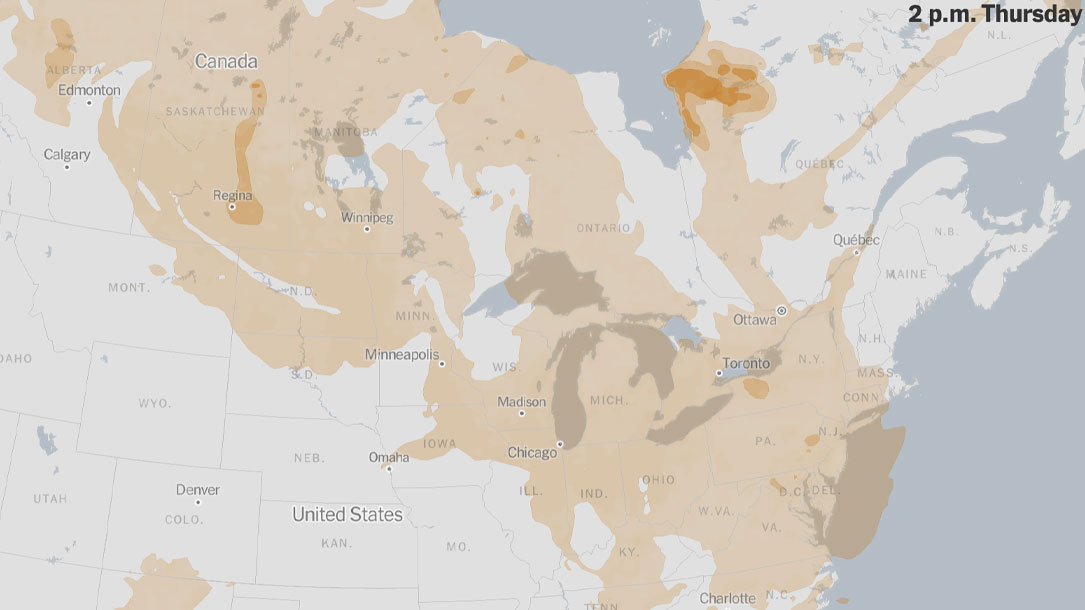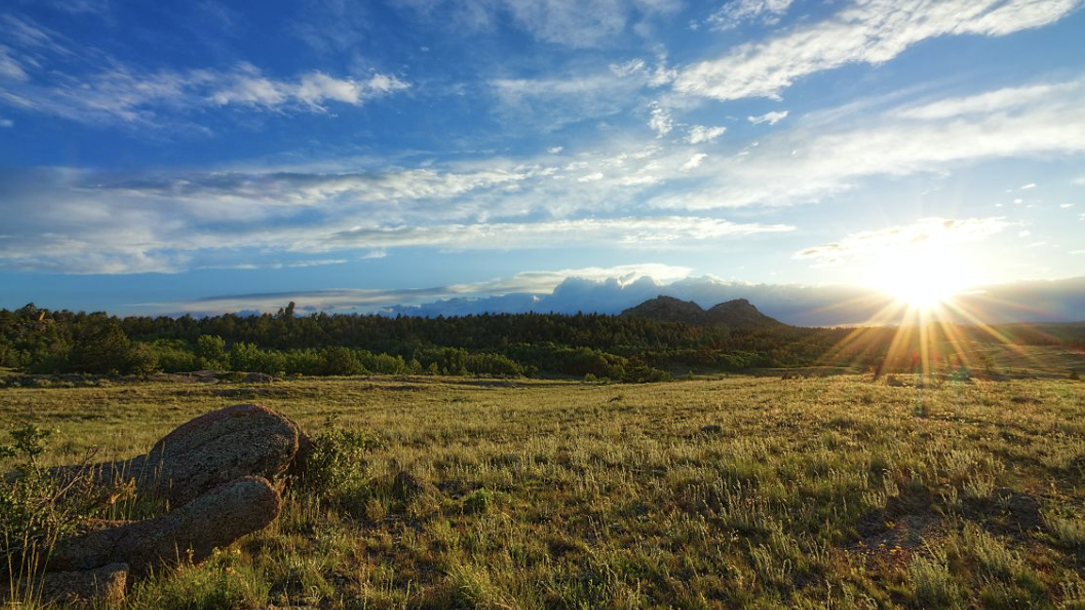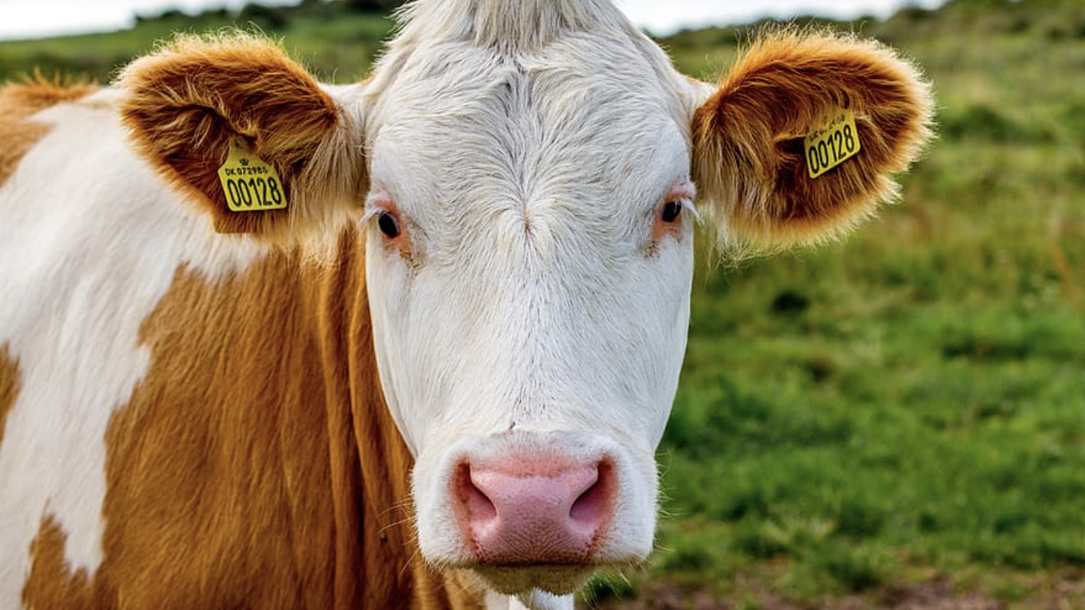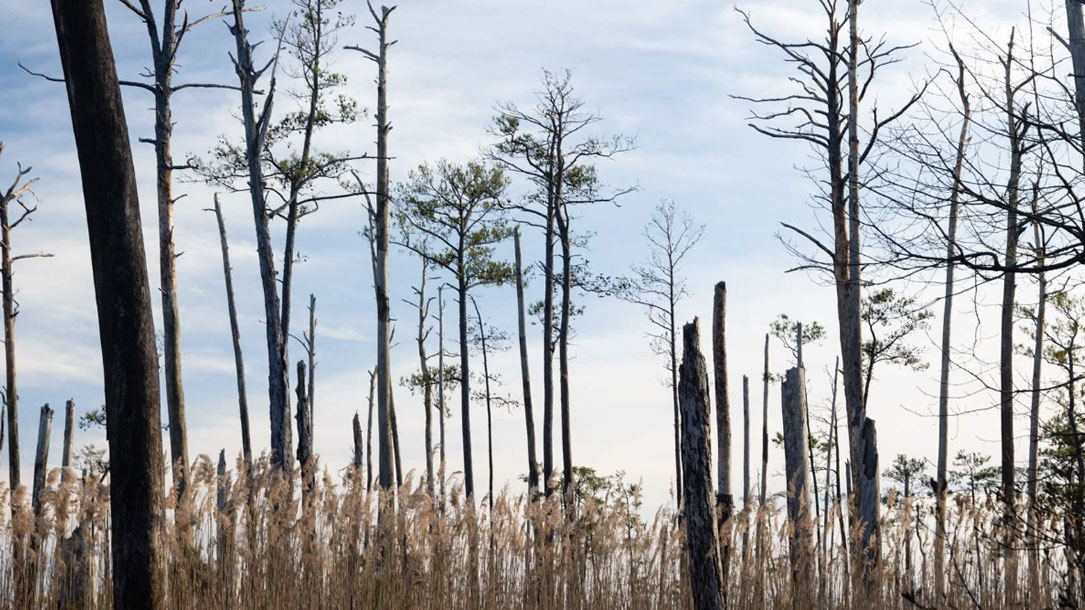
Maps: Tracking air quality and smoke from Canada wildfires
Smoke and haze lingers over sections of North America, as polluted air continues to spread from hundreds of wildfires burning throughout Canada.
This is the current status of air quality across the United States and Canada. (Here’s a guide to understanding air quality readings.)
In early June, the level of particulate matter in the air from smoke became so unhealthy that many U.S. cities set records. Some Canadian cities experienced far worse conditions. At points, it was hazardous to breathe everywhere from Minnesota and Indiana to sections of the Mid-Atlantic region and the South, according to AirNow, a U.S government data source.

Climate change, antibiotics may threaten soil
A study by researchers at the Cary Institute of Ecosystem Studies in Millbrook, New York, has shown that when rising temperatures combine with antibiotic residues expelled by livestock, it degrades soil microbe efficiency, soil resilience to future stress, and its ability to trap carbon…

Study: Climate change increases global risk to urban forests
Climate change threatens the health and survival of urban trees and the various benefits they deliver to urban inhabitants. Here, we show that 56% and 65% of species in 164 cities across 78 countries are currently exceeding temperature and precipitation conditions experienced in their geographic range, respectively. We assessed 3,129 tree and shrub species, using three metrics related to climate vulnerability: exposure, safety margin and risk.

Research: Declining urban and community tree cover in the United States
Urban forests provide many benefits to society, including moderating climate, reducing building energy use and atmospheric carbon dioxide (CO2), improving air and water quality, mitigating rainfall runoff and flooding, enhancing human health and social well-being and lowering noise impacts (Nowak and Dwyer, 2007)…

Cities are rethinking what kinds of trees they’re planting
The U.S. Forest Service estimates that cities are losing some 36 million trees every year, wiped out by development, disease and, increasingly, climate stressors like drought. In a recent study published in Nature, researchers found that more than half of urban trees in 164 cities around the world were already experiencing temperature and precipitation conditions that were beyond their limits for survival.
“So many of the trees that we’ve relied upon heavily are falling out of favor now as the climate changes…”

A fresh look into grasslands as carbon sinks
The researchers also found that continuous livestock grazing reduces plant cover, diversity, and productivity, and that seasonal or rotational grazing show the least negative effects and can even promote soil carbon storage.
“[We found that grassland ecosystems’] plant and microbial biodiversity and functions can be restored by improving grassland management, leading to substantial carbon removal from the atmosphere thus contributing to climate change mitigation”…

Research report: Antibiotics and temperature interact to disrupt soil communities and nutrient cycling
Soils contain immense diversity and support terrestrial ecosystem functions, but they face both anthropogenic and environmental stressors. While many studies have examined the influence of individual stressors on soils, how these perturbations will interact to shape soil communities and their ability to cycle nutrients is far less resolved. Here, we hypothesized that when soils experience multiple stressors their ability to maintain connected and stable communities is disrupted, leading to shifts in C and N pools.

To best fight climate change, ‘Blue Carbon’ habitats must first survive it
Increasingly, U.S. coastal landscapes are home to “ghost forests”—the remnants of healthy forests ravaged by rapid saltwater intrusion and increased flooding caused by climate change-related events, such as sea-level rise, hurricanes, and drought.
Sometimes, salt-tolerant marsh grasses replace coastal freshwater forests, but because of the release of stored carbon as trees decompose, this transition may result in a temporary net loss of stored carbon and increase the release of other greenhouse gases such as methane [a very powerful climate change accelerator].
Initial research suggested that tree stems in ghost forests may serve as a type of straw, allowing the release of methane into the atmosphere from the degraded trees, said Melinda Martinez, a Mendenhall post-doctorate/research ecologist with the U.S. Geological Survey within the Wetland and Aquatic Research Center in Lafayette, Louisiana…

USDA Forest Service Chief Randy Moore’s statement announcing actions the Forest Service will take to resume its prescribed fire program safely and effectively after completion of its 90-day national review
Washington D.C.,September 8, 2022 — USDA Forest Service Chief Randy Moore released the following statement announcing actions the Forest Service will take to resume its prescribed fire program safely and effectively after completion of its 90-day national review…

Fire weather extremes make prescribed burns riskier, but more essential than ever
“Although prescribed fire is one of the most effective ways to reduce wildfire risk, this was a necessary decision in light of recent prescribed fire escapes,” U.S. Forest Service Chief Randy Moore wrote in a national directive in September, announcing the agency would resume prescribed burns following the pause. “This also reflects the growing recognition that extreme conditions of overgrown forests, climate change, and more than a century of rigorous fire suppression are influencing fire behavior in ways we had never seen before…”












